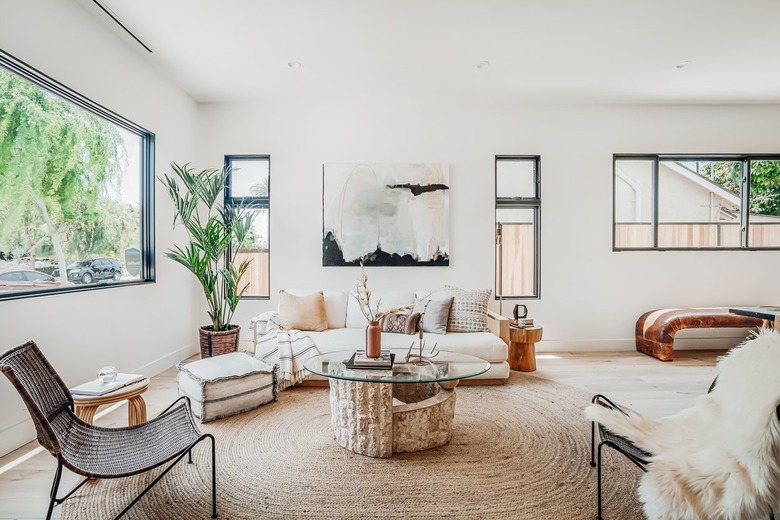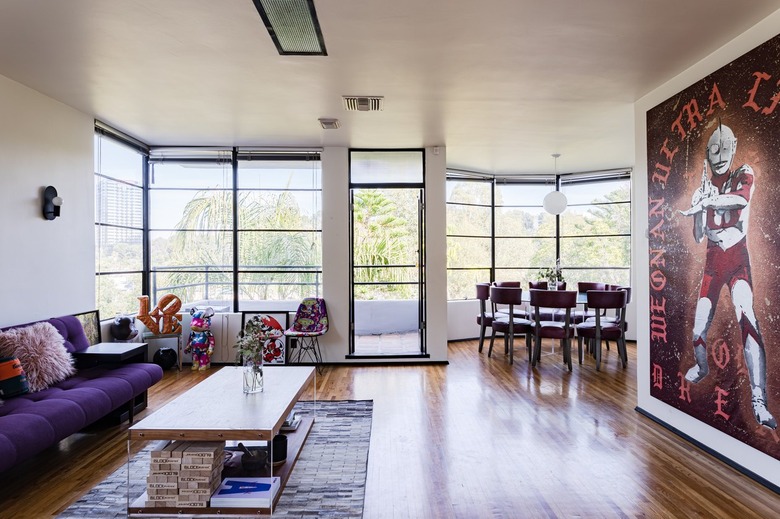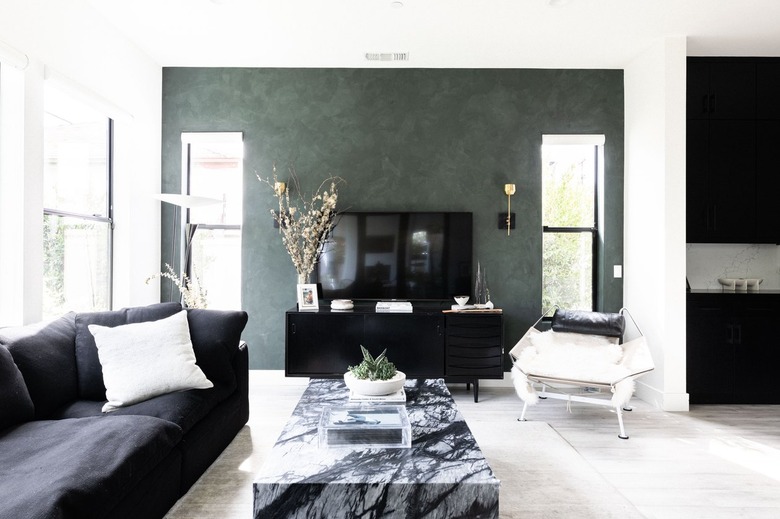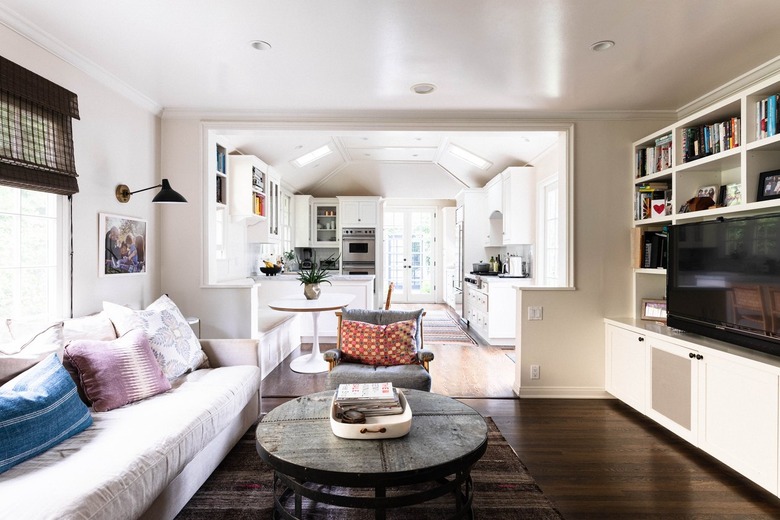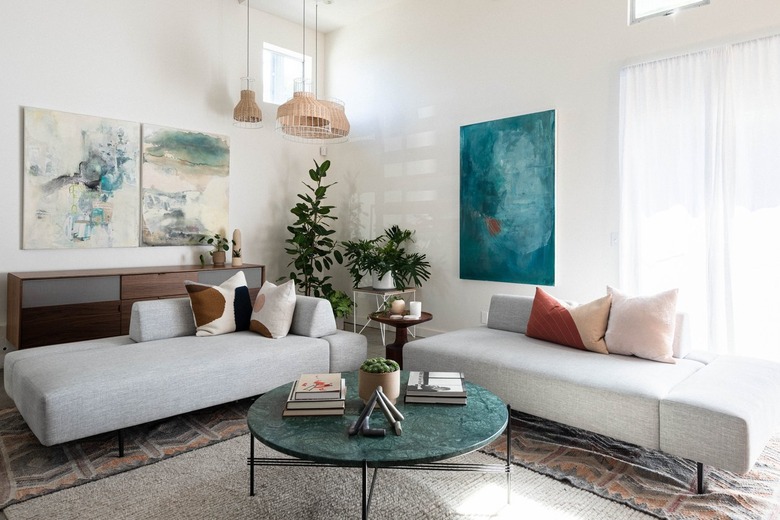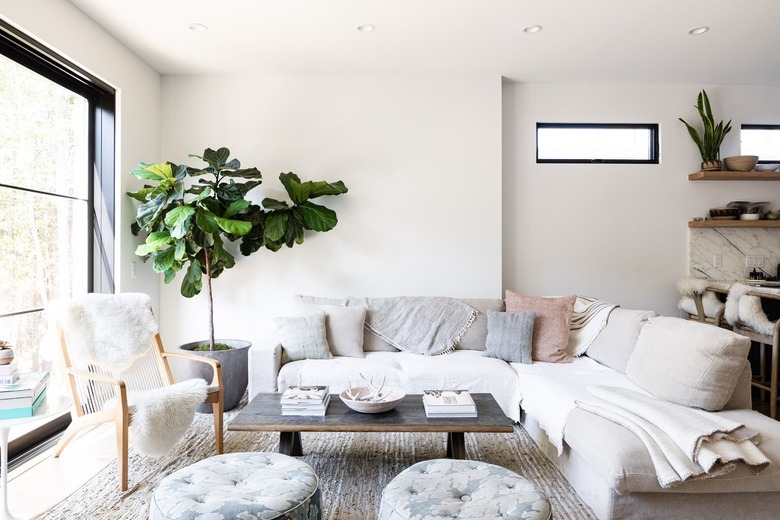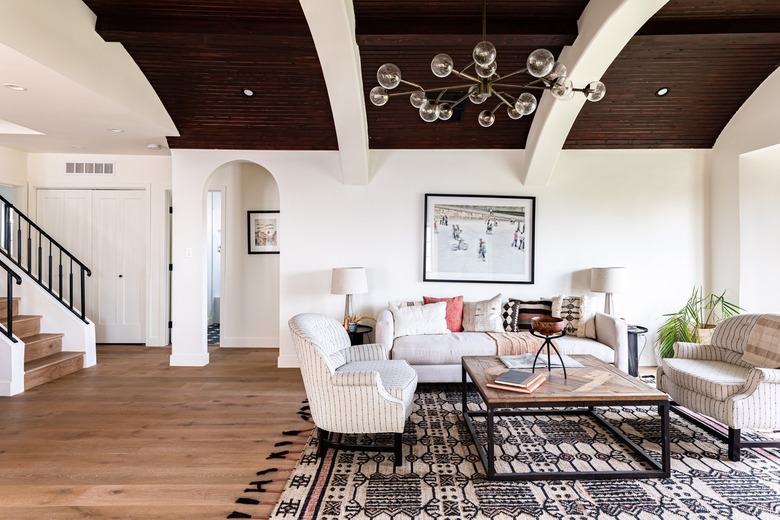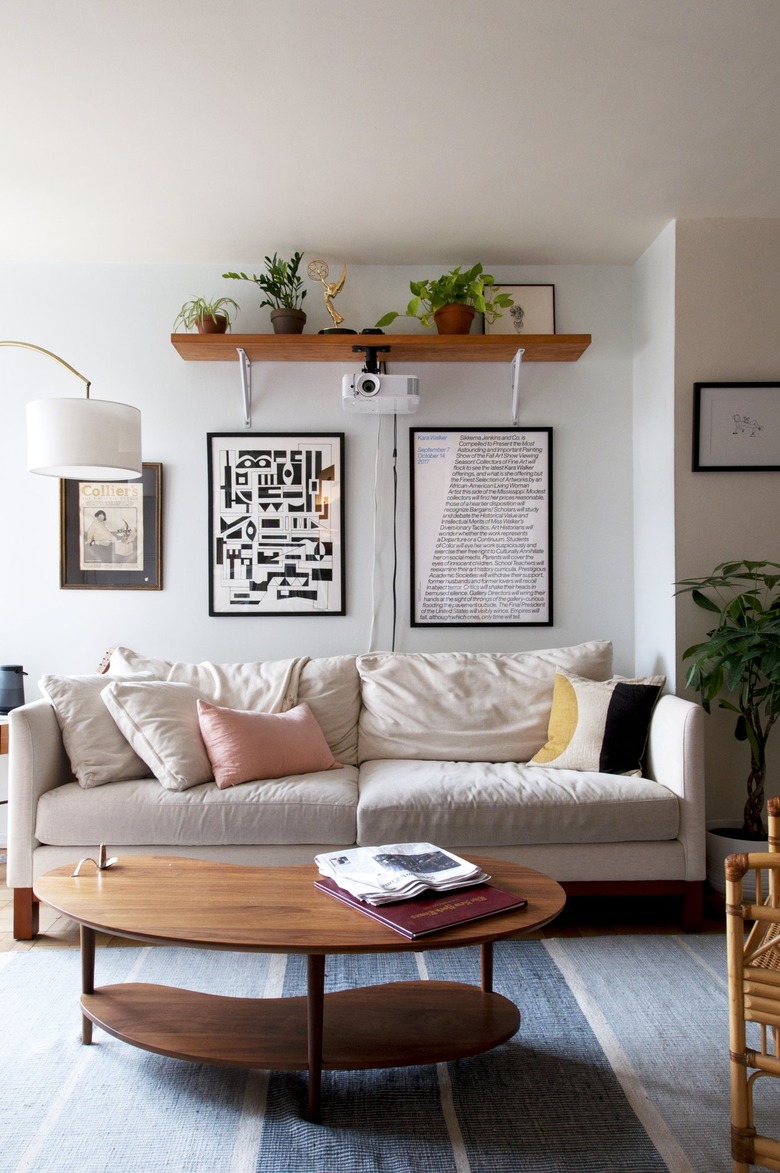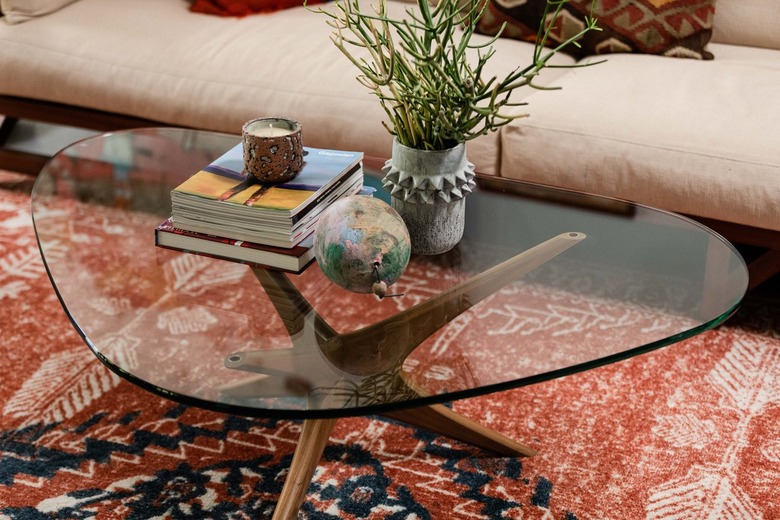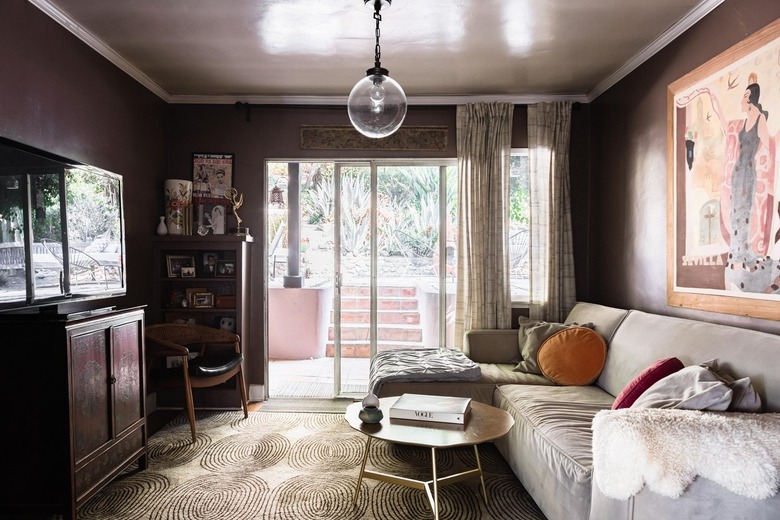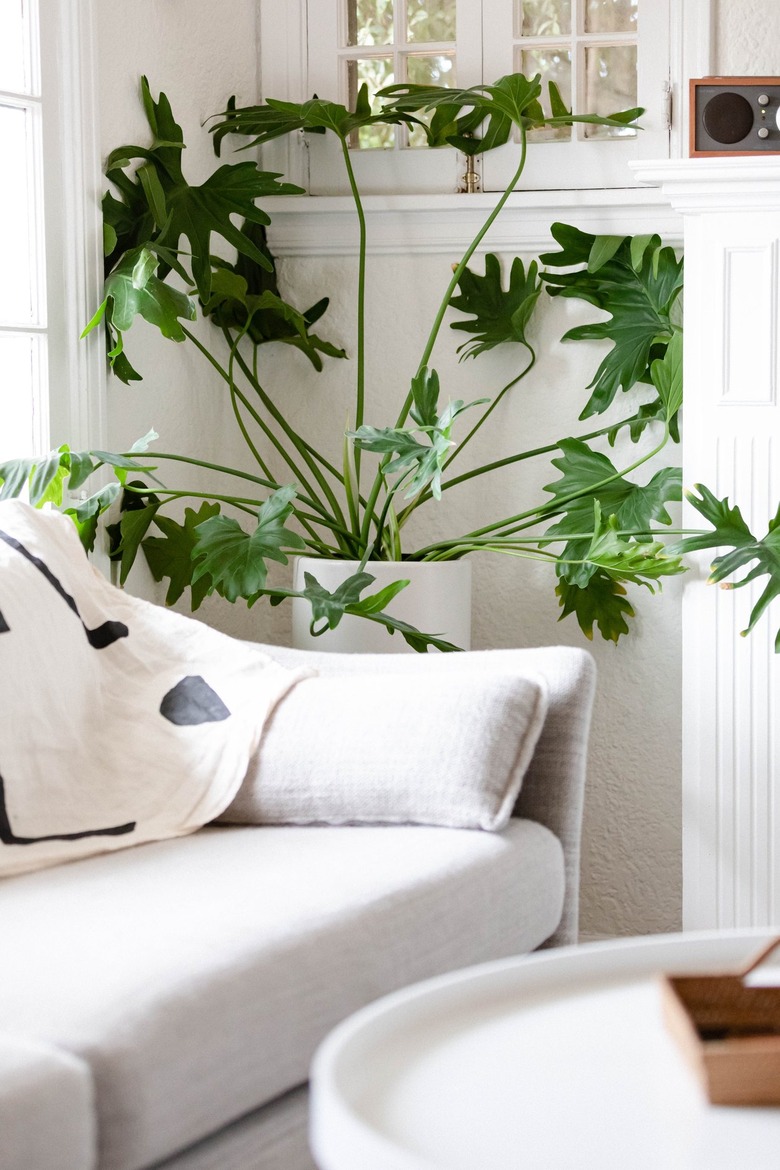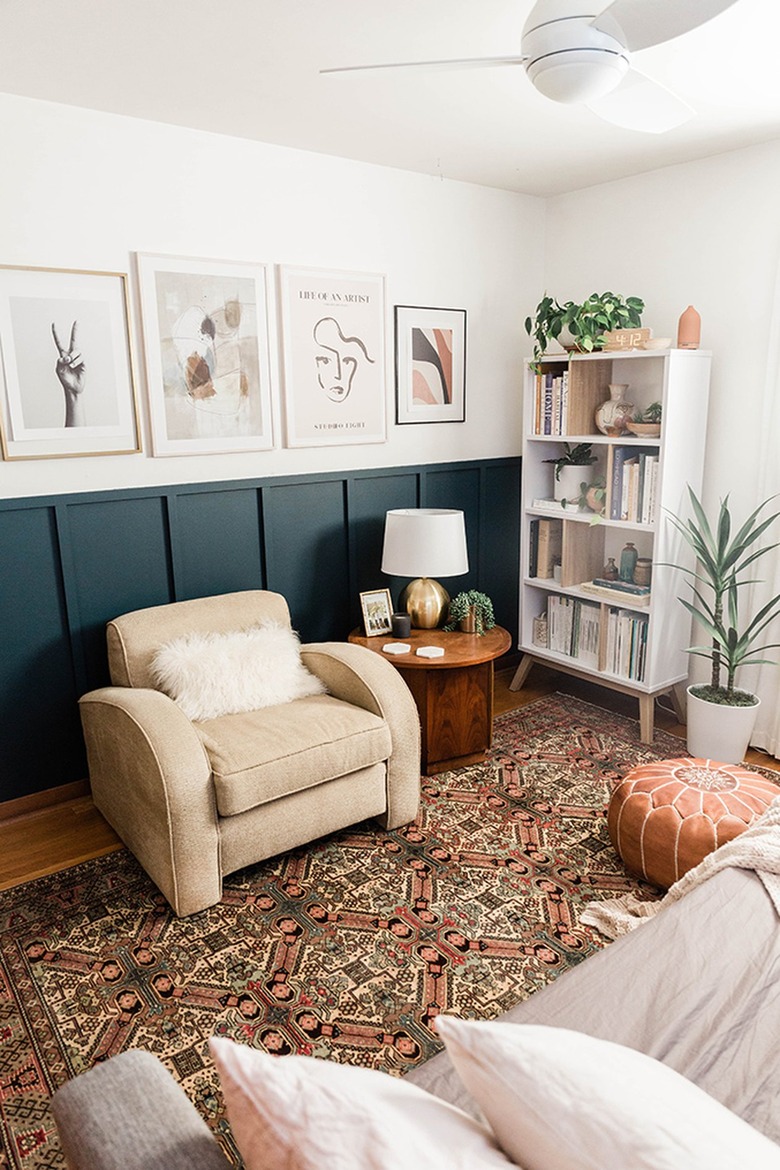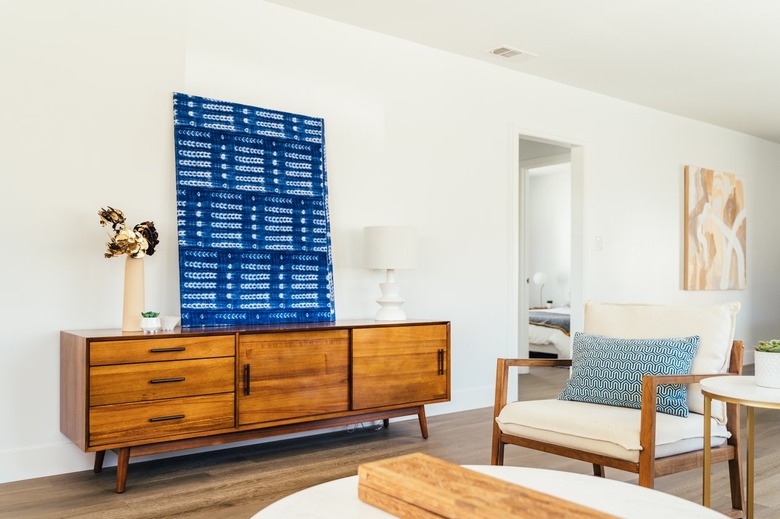How To Decorate A Living Room: 12 Expert Interior Design Tips
In every home, whether it be an apartment or a house, the living room tends to be a place that's used for more than one purpose. As a result, figuring out how to decorate this multifunctional space can be a bit tricky. Starting with the floor plan, a thoughtful layout should flow well and shouldn't feel overcrowded. Once that's squared away, you can get to the fun part: decorating. But don't be fooled: Sprucing up your living room can be quite daunting. There are a lot of things to think about, after all.
So, how do you make sure your living room design reflects your personality and is also functional? Great question. First, don't worry about making a mistake — transforming your space should be fun. Feel free to mix and match colors, patterns, textures, and styles. And in an effort to make sure that the end result is something you're happy with, we reached out to a few interior designers to get their professional advice on how to decorate the living room of your dreams.
12 Living Room Decorating Ideas
1. Decide on your budget.
One of the first things you should do before diving into your living room makeover is decide on a budget. This means determining where you can save and where you can splurge. To save money, interior designer Kelsey Haywood says, "Take stock of what you already have to limit excess spending. This involves stepping outside the living room and combing through your home." There may be items in other rooms that might be more suited to your living room. What feels like a tired nightstand in a guest room could be the perfect end table next to a couch or an accent chair. Or perhaps those IKEA bookshelves in your home office would actually work better in your living space? You'd be surprised how many items you can relocate or repurpose in your own home.
2. Create a mood board.
Whether you're hiring a professional to handle your living room makeover or you're doing it yourself, an important part of decorating is figuring out what decor style really speaks to you. One of the best ways to determine this is by putting together a mood board. Greenhouse Studio has some great tips on how to create a quick and easy one on Pinterest:
1. Avoid having too many preconceived living room ideas when you begin. Just start pinning interiors, color palettes, furniture, and accessories that you like.
2. Look for images of furniture alone or over white backgrounds so you can see how it fits together better with your other Pinterest pins and without the "visual noise" of a staged room. If you can't find a product you're interested in on Pinterest, explore manufacturers' websites and pin images directly from the website.
3. Be sure to include all of the elements for your space. Remember to add things like flooring and window treatments. Include images that reflect the overall mood and style of your dream room: Are you into a Scandi or boho vibe? Add furniture pieces like couches, sectionals, accent chairs, benches, ottomans, and poufs. Collect images of artwork for your walls. Include paint color swatches and photos of accessories like pillows, throws, and objects for shelves or tabletops.
4. When you finish, do a gut check and make edits. As you see everything you've pinned all together, trust your feelings on what works and what doesn't.
Instead of using Pinterest for your mood board, you can do it the old-fashioned way by clipping images from magazines and catalogs. Over time, and with enough inspiration photos to reference, you will begin to see a pattern or a specific look develop — this can be used to guide your design scheme. Plus, referring back to your visual aid throughout your remodel will help keep you on course.
3. View your space with a clean slate.
If your living room is already chock-full of furniture and more, it can be hard to see past all of that stuff and visualize a new design. According to designer Kelsey Haywood, one way to approach this problem is to clear the room completely. "Once the room is empty, put some painter's tape down on the floor to play with dimensions and layout. You'll be surprised what a difference this step makes." Although this can be a bit of a hassle, it will act as a clean slate so you can see the potential of your space. You can easily move the tape around until you land on a layout that feels right for you. And let's face it, moving tape is way easier than moving a couch and heavy cabinets over and over.
4. Always measure before you buy anything.
No matter your design style, before buying anything new or incorporating items you already have on hand, measure. This is definitely one step you should never skip when it comes to decorating a living room. For designer Michelle Gage, it's one of the most important parts of the whole process. "It lays the foundation and helps inform furniture layout." And it's super important when it comes to buying larger items like a sofa or an area rug. Gage says, "Those are two items that are difficult to re-home if ordered incorrectly." Not only will accurate measurements prove crucial when deciding how to arrange your furniture, but it's also important to consider the traffic flow — you want to make sure there is enough room to maneuver around each piece comfortably.
5. Start with big seating first.
It's always best to get the big items squared away first, and in a living room that usually means the couch. According to Andi Morse of Morse Design, when it comes to keeping everyone comfy, "The perfect sofa is pivotal to any living room." If you have the space, an oversize sectional will provide the perfect spot for everyone to gather for movie night or just spend time hanging out. Even if you're working with a snug area, sectionals come in many sizes. Or a chic loveseat would do the trick, too. Once you know how much space your seating will require, you can build out from there, allocating square footage to accent chairs and TV units.
6. Invest in an area rug.
After figuring out your seating, it's time to find the right area rug for your living room. Again, remember to measure if you haven't done so already. Typical rug sizes are 8 x 10, 9 x 12, and 10 x 14. Shea McGee of Studio McGee suggests investing in a rug that's big enough to extend beyond each piece of furniture by six inches, or making sure that at least the front legs of each piece are on the rug.
Next, think about how much traffic your space gets. In most homes, the living room is a busy area that gets a lot of wear and tear. In that case, materials like wool and jute are longer lasting and more forgiving than, say, silk. McGee says, "Not only do rugs bring pattern, color, and character to your home, they make everything cozy. Plus, there's nothing like having a soft place to walk on." Consider neutral shades if your sofa has more color or vice versa. And if you're lucky enough to have a large living room, splurge on a bigger rug that can accommodate more than one seating area.
7. Hang art on the walls.
Wall art is another way to inject your personal sense of style into your living area. But knowing how to hang art the right way is important. Use painter's tape to visually frame out where each piece of art will go — this will help avoid any headaches or mistakes later. If you want to hang a single oversize painting or a gallery wall, Shea McGee has three simple steps to keep in mind before hammering a single nail. First, if you have one piece of wall decor, hang it at eye level or around 60 inches from the floor. When hanging art above furniture, it should be 8 to 10 inches above it, so it still feels connected. But if you're hanging it over a sofa, the piece should be around two-thirds its width. Second, if you're hanging two pieces, treat them as one and apply the above rules. Third, if you're hanging a gallery wall, keep the spacing between each piece exactly the same.
8. Find a coffee table that fits your lifestyle.
While coffee tables serve a huge purpose in a living room, picking the right shape comes down to a few things. Design pro Emily Henderson has some fantastic tips on choosing the best coffee table for your living room. Even though function is important, it should blend in seamlessly with the overall aesthetic. She suggests considering a rectangular shape if you have a standard-style sofa or want a bigger surface to put out those snacks for movie night. Square shapes work great to create a conversation area with a sofa and facing chairs or a sectional.
Round coffee tables are superb space-savers for those of us who have smaller living rooms. And oval options work just as well as the rectangular variety but might be more appealing if you have little ones at home and want to avoid sharp edges. You also want to take a look at the shape of your sofa or sectional. Curved edges look nice together, as do right angles. And don't forget to explore coffee tables that come with storage if that's something you need more of. And let's be honest, who doesn't?
9. Accessorize with personal touches.
Of all the rooms in the house, the living room is the one that should reflect you most. Michelle Gage encourages people to show off their style with a little fun. "That doesn't mean to line your walls with family photos. You can hang images and/or place objects from your travels or pieces from local artists." Stuck on where to start? Consider collecting handmade throw pillows or textiles from flea markets and smaller shops to breathe new life into your sofa.
10. Make the lighting count.
There's no denying the power of a good lighting plan. Even if your living room receives loads of natural light, it's still important. Remember, this is a space that serves a breadth of functions. While many people focus on one showstopping fixture to illuminate their space, according to the experts at Lightology, layering the lighting in your living room is the best way to go. Floor lamps for reading, wall sconces for highlighting art or plants, and table lamps to set the mood all work together to create the perfect ambiance regardless of the time of day. Plus, with so many styles to choose from, light fixtures are a fun way to bring added flair to your space.
11. Bring in plants.
Just like with lighting, there are so many different shapes and sizes of houseplants to choose from, so literally everyone — from green to black thumbs — can find one that fits their lifestyle and decor perfectly. Not to mention, plants are just a beautiful way to add a decorative touch to your living room. The design team at Hayneedle suggests grouping plants using stands in varying heights to create a focal point. If you have a small living room, get some macrame hangers or install a few floating shelves to display your leafy greens.
Plants are also a great way to add a little something extra to a side table or credenza, as well as fill an awkward space or corner. Some people go big and fill out large windows with verdant foliage, which is always a striking sight. Whether you opt for a giant Fiddle Leaf Fig or a group of smaller cacti, adding plants to your living room can really make a big impact. And we have on good authority that greenery can actually boost your mood. How's that for functional decor?
12. Add color and contrast.
If monochromatic spaces aren't your thing and you want to invite more color to your living room, consider adding an accent wall in a bold paint. Or perhaps incorporate some board and batten wall paneling for a bit of visual interest. Don't be afraid to mix and match wallpaper or upholstery patterns, too. "I like things to clash a bit to avoid everything matching," says designer Heidi Caillier. If you have a fireplace, try painting the mantle in a contrasting color to create a striking focal point.
Just a Few Things to Keep in Mind
Just a Few Things to Keep in Mind
The most important thing to remember is that this process should be a fun one. You are, after all, designing a space that you'll be spending tons of time in. So take the time to consider the above tips and don't rush into any decisions. Decorating is a process, and every room in your house will constantly evolve. Start with the basics like determining your budget.
Then narrow down what decor style truly speaks to you by creating a mood board. Take the time to measure your space and come up with a floor plan that works. And lastly, enjoy yourself. Ultimately, you want a space that is functional and feels authentically you — so throughout the process, continuously check in with yourself and your mood board to make sure that you're staying on track.
